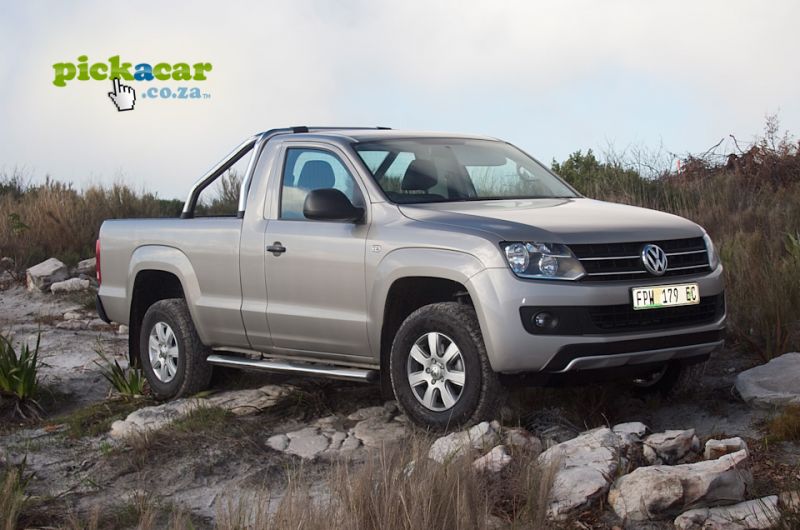Volkswagen Amarok Review: Buy a better bakkie! - Full Review

Volkswagen Amarok Review: Buy a better bakkie!
Overview
Volkswagen have made a foray into the bakkie market with the Amarok, aiming their sights on the likes of the Toyota Hilux. Volkswagen’s previous attempt at a bakkie, came in the form of a VW Caddy, which were great cars, based on the Citi Golf platform it had a small half ton load capacity, and came with petrol and diesel engine options, mostly 1.6 and 1.8-litre engines.
VW have stepped it up somewhat though, and they have built a proper size bakkie, capable of holding two euro crates in the back. That’s a significant improvement on previous generations of VW bakkies.
Performance
Being VW, they have made the Amarok Single Cab bakkie available with a couple of different engine options. There is a petrol variant, a 2.0-litre 118kW engine producing 300Nm of torque. Then there are the 2 (more popular) diesel versions. Both are 2.0-litre engines, one is a single turbo and the other is a Bi-Turbo. The single turbo produces 90kW and 240Nm or torque. The Bi-Turbo gives you 120kW and 400Nm of torque, and that’s the one you’ll want if you’re buying. It also happens to be the one we tested.
Economy
Over the last couple years, thanks to huge pressure from the EU, car manufacturers have begun replacing cubic cm, with forced injection. The Amarok is not immune to this treatment, and as such the 2.0-litre Bi-Turbo engine turns out to be quite economical. When you consider that you’re lugging a fairly big chunk of metal around, achieving only 7.9 l/100km is pretty good. Of course the economy goes north once you load it up at the back or if you go driving off road. Even then, the economy stays below 10 l/100k.
Tech
There isn’t much in terms of tech on the inside. The Amarok has a radio, central locking and some air conditioning. But where you will find some really cool tech, is in the car itself. One of the features that makes the Amarok unique is it’s off road ABS system. It sounded strange to us at first, but once we began some testing we were properly impressed with the results. On a surface with loose gravel the wheels actually do lockup for a split second, building up wedges of loose material in front of the wheels before unlocking the wheels again. The results? Greatly reduced stopping distances.
Comfort
The Amarok has some pretty good ground clearance, which is fine when you’re on the farm or in the bush, but it’s quite a tall car to get into. On the A-pillar there is a handle to pull yourself up with, but kids struggle to get in on the passenger side. Ride comfort is very good for such a capable car. On the road the 6 speed manual gearbox is good with the changes. The clutch is light, the steering is fully electronic and easy to drive. Even off road the Amarok is still a comfortable drive.
Practicality
As the primary purpose of the Amarok is to be a utility vehicle, it scores lots of points in the practicality department. With a class leading loading bay, it can take 2 euro crates side by side. The tailgate is strong and folds flat to extend the loading area. Inside the cabin you’ll find only 2 seats. The cabin is spacious though and filled with storage compartments. Parking in the Amarok can be problematic due to it’s sheer size. Narrow streets around Cape Town need to be driven slower than usual, but the ability to park just about anywhere makes up for it.
Conclusion
As a new car on the market, the VW Amarok does pretty well against it’s competitors. It’s a good looking car that performs very well. VW have managed to extract solid power from a 2.0-litre engine. Economy in an urban cycle is great, and even when you’re off road it’s not too bad. The Off-Road ABS is a really great safety feature, and quite fun to test. Loading capacity is excellent and outperforms most other bakkies in it’s class. But most importantly, it’s an easy to drive and well finished as an all round vehicle. As mentioned earlier, the Bi-Turbo Amarok bakkie is the one we would go for.
Tweet
Latest Reviews
19 March 2013
18 March 2013
28 February 2013
19 February 2013
14 February 2013
07 February 2013